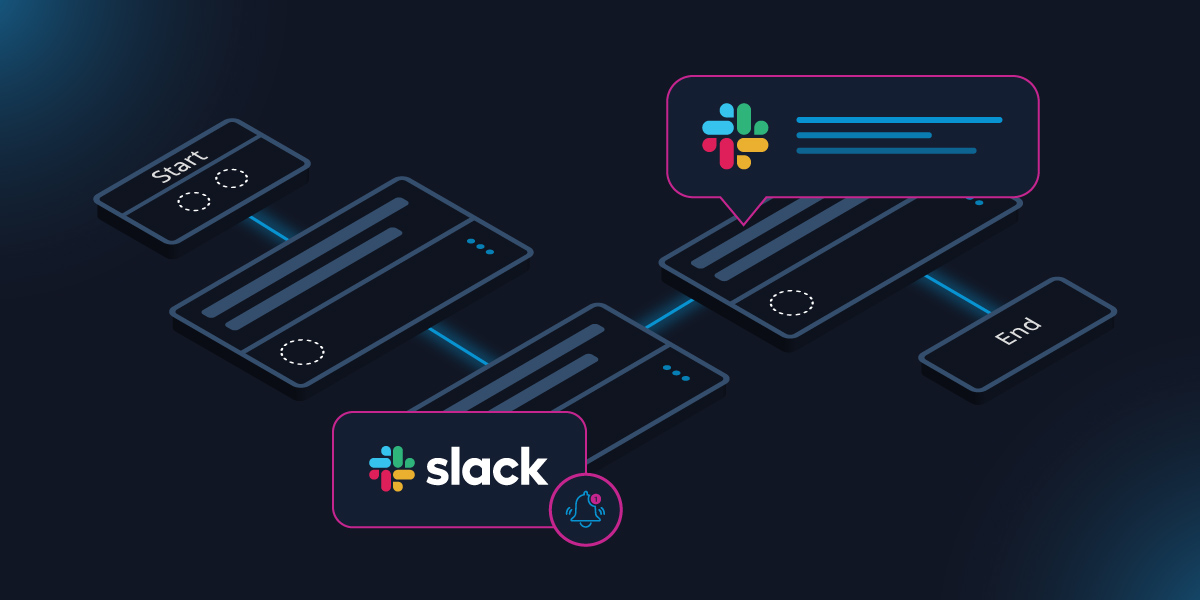Online collaboration platforms like Slack and Microsoft Teams have become indispensable tools for millions of people around the world, giving businesses and their employees the ability to connect with colleagues and team members directly, and to interact with them in real-time. These platforms not only help reduce emails and meetings — they also increase work efficiency and improve a team’s overall effectiveness.
But when you look beyond the basic messaging capabilities and other functionalities of these platforms, there is a more powerful collaboration tool that many teams or organizations have yet to tap into.
In the network engineering world, for example, many teams have yet to realize the immense benefit one of these real-time collaboration tools can bring to a successful automation strategy. By integrating a collaboration platform into a network automation strategy — and taking advantage of being able to share responses, files, videos and even links to applications and device statuses — network teams can leverage these tools to manage, monitor and update their networks in real-time, improving the ways in which they manage their networks.
Integrate & Automate
For teams managing large networks, communication between network engineers, network operations, and management is critical for broadcasting changes in network status, coordinating resources, and resolving disruptions.
Many network teams already use a collaboration platform for their day-to-day communications. However, when it’s time to communicate detailed network information in real-time, the platform often becomes an afterthought, especially when it comes to making changes during a short maintenance window or troubleshooting a network problem. These teams are missing an opportunity to employ a tool they’re already using to its full potential.
Integrating a collaboration tool into your network automations can generate three key benefits:
1. Real-Time Automation Visibility
Remember what it was like to have to manually work through backlogs of network changes?
Now that more teams are leveraging automation, tasks that took hours or even days can be accomplished in minutes. That’s obviously a good thing from a productivity standpoint, but it also makes keeping everyone on the team aware of when automations are running and what changes were made more difficult.
By integrating a collaboration platform into the automated network change process, teams can receive real-time updates as tasks are executed within the workflow, providing better visibility and oversight of those automated changes and the overall well-being of the network.
2. Increased Process Efficiency & Accountability
To provision a new application or service, teams need to coordinate efforts and work in a specific order, each one doing its part and communicating details that are necessary for everything to work correctly. Unfortunately, it’s common for delays to occur due to a lack of communication between teams, or a miscommunication or non-communication of the network details that another group needs to do its part of the process.
The most commonly used collaboration tools offer the ability to integrate easily with automation processes to send messages, files, and links to individuals and channels. By updating the platform with an automation as soon as a task is completed, it can notify the next team so they’re aware and can start their portion of the process. The notification could even include a direct HTTPS link to a change ticket or device entry, saving teams the time of looking up data based on just a text. This will speed handoffs between teams and reduce errors, as well as improve accountability across the organization.
3. Faster Trouble Resolution
Networks have become complex systems that span multiple devices across multiple domains, working together through many different protocols. In any kind of dispersed system like this there’s always the opportunity for problems to rear their ugly heads, and networks are no exception.
Fortunately, networks have many ways to provide resiliency and redundancy at multiple layers, so the impact of a problem can be minimized. However, if you want to help network teams resolve problems quickly, they need to all be aware of the issue in real-time and have immediate access to the information leading up to the problem. Network automations that integrate with a collaboration platform for updates and notifications can see a full accounting of what happened and when during a network event, reducing the time to resolve network problems when they occur.
Take Collaboration to the Next Level with Itential
Because every IT ecosystem is unique, Itential takes a practical approach to network automation. One of our core, patented capabilities is our ability to rapidly integrate with anything in your ecosystem – including real-time collaboration tools.
By leveraging your existing communications tool as part of your network automation strategy, the network team can ensure real-time messages are sent out at any stage of an automated process to keep the team updated and ensure issues are quickly addressed. Teams who use Itential can easily create automations that can gather data for a network change, execute the network change, and broadcast a message to a team with detailed information on the network devices being changed, the nature of the changes, and when the changes begin and are completed — all while the automation is in execution. This eliminates the need for network engineers to stop the work they’re doing to manually post an update, freeing up time to focus on larger priorities.
Itential’s free and easy integration with instant messaging services, including Slack and Microsoft Teams, can pay large dividends in the managing, monitoring, and updating of your network. By dynamically querying devices, extracting data, and broadcasting status updates to your network teams, real-time insight into your network is just a click away.
You can learn more about Itential’s robust integration capabilities here or check out this recent demo that shows step-by-step how you can rapidly integrate a messaging tool into an Itential automation.
Article originally published on APMdigest.





